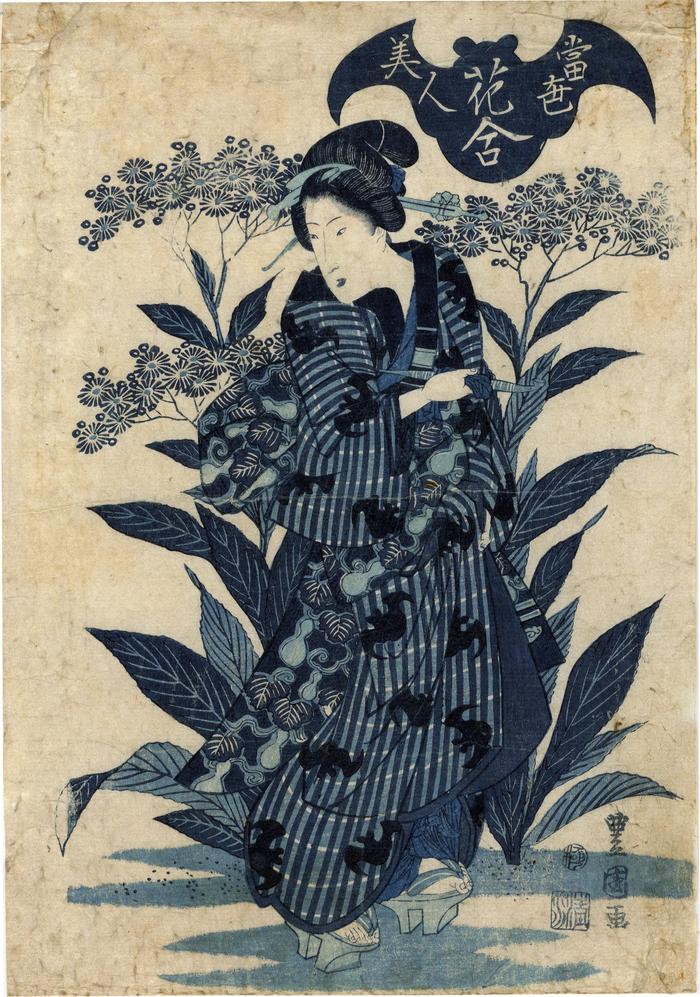Utagawa Toyokuni II (二代目歌川豊国) (artist 1777 – 1835)
Aizuri-e - a bijin stands before a large plant of chrysanthemums from the series Beauties of the Latest Fashion Compared with the Beauty of Flowers (Tōsei bijin hana-awase - 當世美人花合)
ca 1825 – 1829
10 in x 14.5 in (Overall dimensions) Japanese color woodblock print
Signed: Toyokuni ga
豊国画
Publisher: Shimizu (Marks U283 - seal 16-079)
Censor's seal: kiwame
Brooklyn Museum
National Gallery of Victoria
Lyon Collection - another example from this series There is another aizuri-e bijin print in the Lyon Collection by Toyokuni II - item #596. In both the woman's pose is basically the same, but the robes are different. The woman in this print is wearing a kimono decorated with bats and gourds, both extremely auspicious symbols.
This woman is holding a pipe or kiseru and in both prints in this collection there are clusters of flowers to be seen just to left - our left - of their heads.
****
At Scholten Japanese Art they wrote: "There are three other prints from this series, also in the collection of The Brooklyn Museum of Art, comparing beauties to plum blossoms, cherry blossoms, and chrysanthemums. As no other designs from the series have been located, it is plausible that there were only four designs corresponding to the four seasons: the Brooklyn impressions would therefore relate to winter, spring and autumn, respectively. As such, this print should represent summer. Although the flower on this print, kikyo (bell flower or balloon flower), is included in the traditional Japanese grouping of Seven Flowers of Autumn (Aki-no Nanakusa), most begin blooming in the late summer."
blue prints (aizuri-e - 藍摺絵) (genre)
beautiful woman picture (bijin-ga - 美人画) (genre)
Shimizu (清水) (publisher)
bats (komori - 蝙蝠) (genre)
